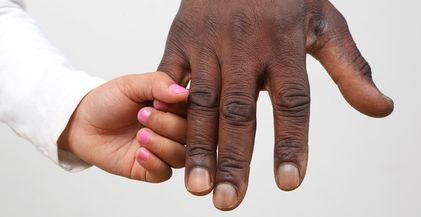Report: State’s number of foster children falls 14%
by October 24, 2018 6:24 pm 1,756 views

The state has reduced the number of children in foster care from 5,196 in late 2016 to 4,471 and reduced the caseload for foster care workers from 28 to 20, according to a new report released Wednesday (Oct. 24) by the Arkansas Department of Human Services.
The report, “Foundation for the Future,” says the 4,471 children currently in foster care is a 14% decline from two years ago. In 2016, the number was projected to grow to 5,800 by August 2017.
The report follows reforms enacted in the wake of a report in November 2016 by child welfare expert Paul Vincent that identified 10 needed reforms. Those goals were incorporated in what DHS called the first phase of the response and lasted until 2017. That year, a second report identified three areas of improvement for phase two: strengthening families so children can stay at home; improving the foster care system; and strengthening the Division of Children and Family Services, the agency that works with foster children.
The caseload of 20 workers per child met the agency’s goal in two years. Vincent had projected that process to take three years, according to the report.
In other findings:
– The percentage of foster children placed with relatives has grown from 23% to 27% with the goal being 33%. Research has shown that children placed with relatives face fewer disruptions. From January 2014 to June 2017, 88 percent of children placed with relatives or “fictive kin” remained in one home throughout their time in foster care. “Fictive kin” is a term referring to non-relatives with family-type relationships with the children.
– The state had set a goal of having 2,000 foster homes by August 2018. Instead, the number remained at 1,800, began falling in March, and is now about 1,600. However, the ratio of foster home beds to children has increased from .69:1 to .82:1. The goal is 1:1. Also, the percentage placed in family-like settings has increased from 78% to 82%.
– The number of overdue child maltreatment investigations has dropped from 721 in 2016 to 94 as of August, with the goal being zero, according to the report.
– The number of children ages 12 and under living in congregate care such as group homes fell from 186 in August 2016 to 67 in August 2018. The number of children ages 10 and under staying in emergency shelters dropped from 102 in August 2016 to 45 in August 2018, with zero being the goal.
– The percentage of foster children ages 6 and over placed in foster homes fell 45% to 44%, well short of the goal of 55% despite an effort to recruit homes for those children. Meanwhile, 85% of foster children ages 6 and under were placed in foster homes.
Lauri Currier, executive director of The CALL, a Christian organization that recruits foster and adoptive families, said the report was “not a surprise to me.”
“I know that DCFS staff from the central office level all the way to the local offices are doing the best that they possibly can to improve how they’re working with families and with children, and so I’m personally impressed with the progress that’s being made, and I would like for it to continue,” she said.
Currier expressed concern about the number of children living in congregate settings and the number of foster families willing to take children above the age of 6.
She said the number of foster homes has fallen partly because at the end of each of the past two years, many adoptions have been finalized. When that happens, families tend to close their homes to foster children at least temporarily.
According to the report, among the changes adopted by DCFS was establishing a central Prevention and Reunification Unit it said took longer than expected to become operational. It was fully staffed in 2018 because of additional state funding. The report said the state’s foster care workforce has increased by 187 positions, with 52 percent of them family service workers. Turnover this past year has decreased from 48% to 41%.
Among the strategies incorporated by DHS are team decision-making, where parents and relatives are involved in making decisions about the children; Nurturing Families of Arkansas, an evidence-based parenting program; and SafeCare Arkansas, a home-visiting program for families with children under age 6 involved in protective services cases.
In October, DCFS launched a program to work with pregnant women and new mothers, while another new program offered by contractors will focus on stabilizing families long-term.
A particular focus has been Sebastian County, which had 15% of the state’s foster care population in 2017, with 60% placed outside their home county. This past year, the number has dropped by 22 percent, and the county’s percentage of the overall state population fell a point to 14%. DCFS had set a goal of adding 200 beds and since April 2017 had added 60. Adoptions were finalized for 178 foster children, which was 33% more than the previous year.
In a press release, DHS Director Cindy Gillespie said, “Phase One of the effort to improve Arkansas’s child welfare system was largely successful at stabilizing the system and preventing a breakdown of the system. Phase Two built upon those efforts and focused on putting initiatives, programs, and practices in place to ensure that the system and the people within and around it were stronger, stable, supported, and empowered to make smarter, more effective decisions. That work built the foundation for Phase Three and the future of child welfare in Arkansas.”
Currier said the report showed that more foster homes are still needed.
“I’m still beating the drum that we still need foster families to step forward to care for these kids, and we especially need foster families for kids between the ages of 6 and 18,” she said.
